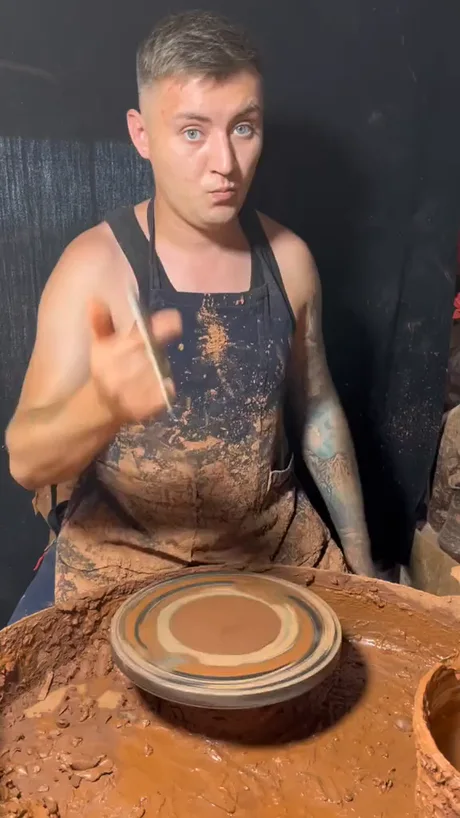https://indieweb.social/@kenSwinson/113634842654030298 kenSwinson@indieweb.social - some freshly carved pots waiting to go into the kiln
2 Likes
https://indieweb.social/@kenSwinson/113634842654030298 kenSwinson@indieweb.social - some freshly carved pots waiting to go into the kiln
https://mstdn.social/@alchemistsstudio/113483453484986491 alchemistsstudio@mstdn.social - This raku pottery vase, 'Orion's Cloak' is inspired by the celestial wonder of the Orion Nebula.
It is made of the stuff of stars, just like you! Keep shining and watch out for those pesky black holes.
Https://rakupottery.ca/raku-vases/
#art #pottery #raku #ceramics #space #sciart #astronomy #MastoArt #handmade
https://swiss.social/@evelynefoerster/113448217431147734 evelynefoerster@swiss.social - #pottery #handmade
Becher und zwei Schüssel
Mug and two bowls
https://mstdn.social/@alchemistsstudio/113409202902711290 alchemistsstudio@mstdn.social - My website revision is done and I wanted to show off my creations available at:
If you'd like to add some pottery to your life or art collection, or are in need of a gift for the upcoming season, please take a look. I'd be thrilled if you decide to support my work and pottery dream.
Prices include shipping in CA and the US. Please consider boosting this post if you are unable to purchase to help a small artist out.
https://mstdn.social/@alchemistsstudio/113342021934391414 alchemistsstudio@mstdn.social - The website revision is almost done - I need to add more pieces, but overall it's coming together.
In order to celebrate and kick things off, I've decided to do a giveaway. If you sign up for our newsletter at:
You will be automatically entered to win this little ra-kutie, that is 7cm tall.
Please boost for visibility and thank you for supporting my pottery journey.
https://indieweb.social/@kenSwinson/112660200243293475 kenSwinson@indieweb.social - I started the weekend on a positive note yesterday when I opened the kiln to see this stag and doe bowl!
Hope you all are having a great weekend!
#pottery #art #deer #kentucky #handmade #arte #mastoArt #porcelain
https://mstdn.social/@alchemistsstudio/112232240964042947 alchemistsstudio@mstdn.social - Guess who is now half a century old?
It took me till my early 40s to find my true passion of creating pottery and making art from clay. I'm always feeling like I am late to my calling and trying to play catch up.
If you have an interest in art or pottery and like the work you see below, consider helping to support this older person's dreams and follow along to be a part of my pottery journey. And remember, it's never too late to chase your dream
Pottery - watch how top and bottom fit at the end

https://img-9gag-fun.9cache.com/photo/axonjBb_460svav1.mp4
2:08 min video w/sound
#art #pottery #video
Hey everyone, I’m #newhere and a #gplusrefugee!
I’m interested in #boardgames, #cats, #cisv, #coffee, #currentevents, #dnd, #editing, #googleplus, #knitting, #photography, #pottery, #rpg, #socialjustice, #vegetarianism, #wilderness, and #wordsmithery.
With a porcelain pot, patience, and heaps of talent, Chinese artist Johnson Tsang was able to express "how [he felt] about [his] country". Following in the footsteps of other great pottery artists, Tsang showcased the true beauty of his process by taking step-by-step pictures until the final product is revealed. Impressive, to say the least.








there's more #photos to be seen ...
#arts #pottery #dragon #sculpture #China #vase #JohnsonTsang